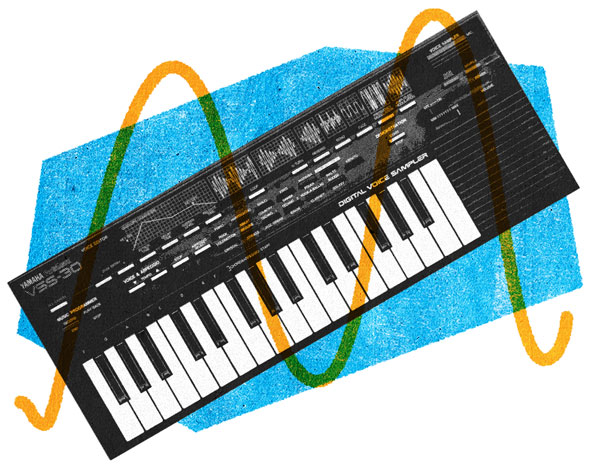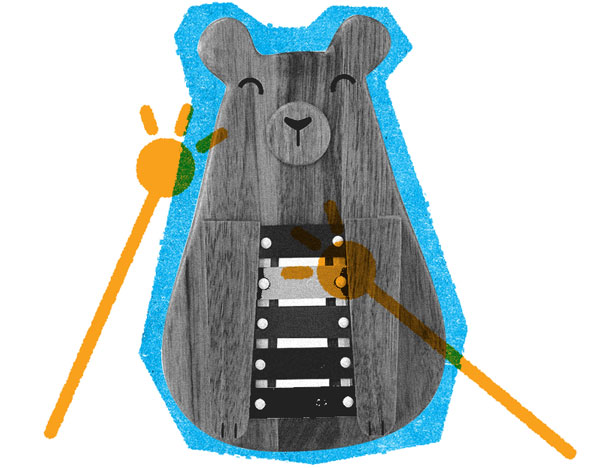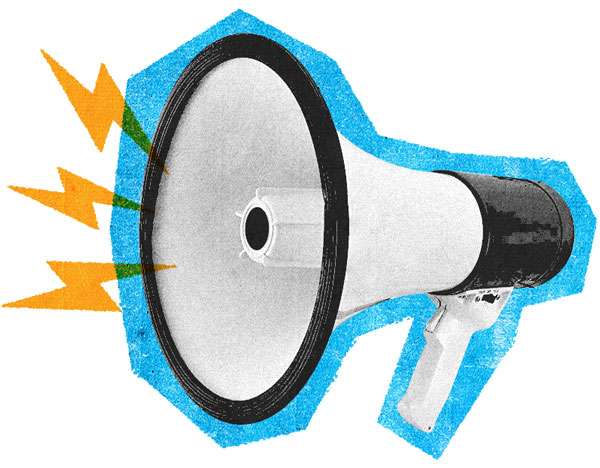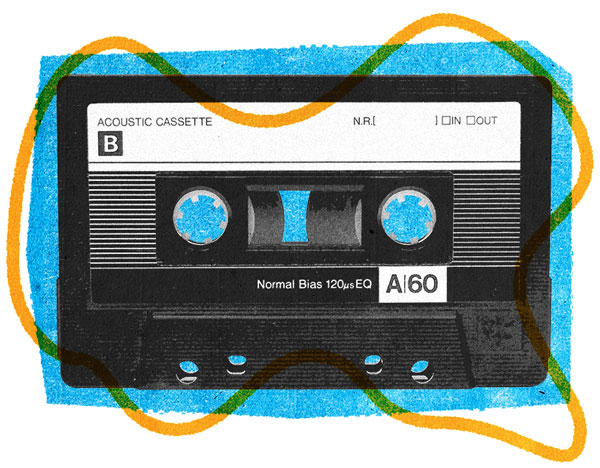Working in the box has plenty of advantages. From instant recall to ease-of-use, staying primarily in the digital realm can make production and mixing extremely convenient. It can also be very clean-sounding. While this is usually thought of as an advantage, there may be times when you want to add a little dirt and grime back into your productions.
Distortion, saturation, bit reduction, noise—these are the hallmarks of the lo-fi sound. Whether or not your entire song could be characterized as "lo-fi," even just one or two lo-fi elements can bring something unique to your track. The way a tape echo saturates the signal. The slight pitch wobbles introduced by wow and flutter on a reel-to-reel tape machine. A cheesy yet effective drum beat from an old Casio. These things add character and life to songs that may otherwise be a little too pristine.
To that end, here are seven ways to bring some grunge and noise into your digital setup. Because not everyone can afford a Culture Vulture or Ampex tape machine, we're going to keep things fun and affordable. If you're committed to staying entirely in the box, don't worry, as we'll outline how to achieve similar results with plugins. Let's get dirty.
Sometimes the sound a production needs isn't from a classic synth or ultra-modern soft synth but from a cheap Casio. Weedy, tweezy, wheezy—you never know when a cheap keyboard from the '80s or '90s will come in handy. And before you dismiss these as just children's play things, remember that plenty of hit songs have featured these "toys."
While the Casio MT-40 is now somewhat expensive thanks to the continued love for the preset "Sleng Teng" riddim, there are plenty others that can be had for next to nothing. The analog PT series is nice, with blippy analog drums and bright keyboard sounds. If FM is your thing, check out Yamaha's PortaSound series, particularly the two-operator PSS-380 and PSS-480. Both have adjustable synthesis parameters while the latter has MIDI and the ability to save presets. They can go from cheesy to extreme noise in just a few seconds.
If you'd rather stay in the box, Plogue makes a great PortaSound emulation called the Chipsynth PortaFM. For Casio fans, check out the free Autodafe Casio VL-1 plugin (sadly, no drum sounds though). Part of the charm of working with these keyboards is the crappy speaker. To emulate this, try Speaker from AudioThing. If you'd rather cook up the sound yourself, try a band pass filter with emphasis on the mids and some light distortion to approximate the sound of the speaker being driven too hard. You can also add a touch of peak resonance to replicate the sound of the plastic body vibrating.
Thanks to ultra-powerful soft samplers like Native Instruments' Kontakt, hardware samplers have been largely forgotten. They still have a lot to offer (as hip-hop producers and sound designers know), so haul out that Roland S-50 that's been gathering dust in the garage for 15 years and let's get started.
While clean, CD-quality sampling may have been the selling point in the '90s, we're all about dirt today, so dial that bit rate back to 12 or even eight (hello, Ensoniq Mirage). The crunch and grit you get from working with low bit rates can be very beautiful, and lowering the sampling frequency darkens up the sound nicely. Sample in a note or chord from an analog synth and hear how it suddenly jumps out of the mix.
While people are catching on that there's value to be had in hardware samplers and prices are creeping up, many can be had for not much money. For example, the Casio SK-1 is plentiful and relatively cheap.
You don't need to fork out for hardware to get a similar sound though. TAL Software's TAL-Sampler plugin models classic hardware samplers and will give you the crunch you need. Also worth checking out is Mathieu Demange's RX950, which recreates the AD/DA stage of the Akai S950. A bit crusher and EQ with the high-end rolled off will get you there too.
Casios and PortaSounds might be considered toys by some but let's talk about actual toys. The Bee Gees Rhythm Machine was just a crappy toy until Kraftwerk used one on "Pocket Calculator." Now it's worth actual money, but there are plenty more toys out there that weren't made famous. You know what I mean: toy pianos and glockenspiels, plastic maracas, that cat keyboard. Most anything will help add a bit of flavor to your production.
Check out local garage sales or thrift stores or even "borrow" one from your nephew or niece. (To see all of the toy keyboards on Reverb, click here.) If it's electronic, don't worry if it doesn't have a line out. With a drill and a little soldering, you can divert the sound from the speakers to an output (see this YouTube video for more on that).
There are plenty of sample packs and Kontakt instruments available with toy sounds. If you have an iOS device, the Electron Echo app is great, modeling an infamously wonky electronic keyboard from the '80s.
Thanks to computers and cheap memory, drum sample quality has vastly improved over the years. These days, we can get pristine 24-bit samples that sound exactly like the real thing. But that's not what we're after here. Low-bit drum samples are punchy and characterful. Pretty much all of your favorite old school drum sounds are 12-bit. But I think we can go even lower.
For the real lo-fi deal, let's aim for eight bits. That's where the grit and aliasing really start to come out. The Linn LM-1 is out of our price range, but there are a few eight-bit machines that are not. One of my favorites is the Korg DDM-110 (and its Latin brother, the DDM-220). It's punchy and raw and cheap. Also wonderfully gritty is the Casio RZ-1, which allows for sampling as well.
For low-bit drum sounds, don't ignore consumer keyboards either. The Casio SK-100 (part of the SK-1 family) has a set of one-shot PCM drum sounds, and it's programmable as well.
To get a similar sound in the box, you can search for eight-bit drum samples or make your own with a bit crusher and distortion. Boost the tops to accent the aliasing and really make them sizzle.
In Beastie Boys Book, Ad-Rock talks about singing through a karaoke mic on Check Your Head. I always assumed they were using some kind of high-end distortion pedal, but no, it was just a garbage karaoke microphone. If you want to rough up your vocals, what could be more fun than singing through a cheap microphone? The more it breaks up when pushed, the better.
There are lots of ways to ruin a vocal recording. In high school, I was in a terrible industrial band and sometimes I sang through a RadioShack megaphone. Harsh, yes, but perhaps just what your production needs. There are also cheap voice changers out there too. Primal Scream apparently used a Darth Vader voice changer on their cover of "Motorhead." There's no limit to the cheap fun you can have with bad microphones. (See all of Reverb's microphones under $20 here.)
If you don't want complaints from your neighbors for yelling through a megaphone on a Tuesday night, try adding a distortion plugin like iZoptope Trash to the vocal plugin chain (or even AudioThings' aptly named Megaphone. Make sure to accentuate the high-mids to really bring out the buzz. You could even use a multi-band compressor to emulate the squashed response of a cheap mic.
Until the '80s, digital hardware effects such as Lexicon digital reverbs could largely be found only in professional studios. Then, thanks to affordable digital technology, a number of low-cost effects units aimed at the home studio musician entered the market. These days anyone can have a Lexicon or Eventide effects processor thanks to digital plugins, but those home studio hardware units still have a lot to offer, especially when thinking of them in terms of lo-fi possibilities.
Home studio reverbs were a little dark and dirty, and that makes them perfect for our purposes. Check out Alesis' QuadraVerb for some lovely algorithms. The Zoom Studio 1201 is frankly pretty weird, especially the digital ring mod, and it might be the cheapest hardware vocoder on the used market. Lastly, if you're looking for a low-bit multi-effects unit, the Yamaha FX500 (aka the shoegaze machine) could be just what you need.
Home studio digital reverbs weren't nearly as clean as their pro studio brethren, so to achieve that sound in the box be sure to dirty up the reverb chain with a little bit of distortion or bit reduction. They were dark as well, so add an EQ after the reverb and roll off some of the highs.
We can't all afford a studio tape machine nor even a consumer-level reel-to-reel, but old cassette decks are likely within reach. Cassette saturation is a beautiful thing, particularly on drums, and even more when pushed hard. If the motors are old and wobbly, even better. Try bouncing down from your DAW to cassette and then back and blend it in with the dry signal for parallel cassette saturation.
Multi-track Tascam Portastudios are climbing in price these days, but you may be able to find those or other cassette recorders for cheap. Don't worry if it doesn't work properly—the dirtier, the better. Likewise old cassette decks, portable recorders, and even voice recorders like mini cassettes and Dictaphones can get you there. They can all add a certain flavor of analog saturation that you can't get elsewhere.
To get this effect without the hassle of moving parts, try DAW Cassette or the free Web Cassette by Klevgrand or RC-20 Retro Color by XLN Audio. Any of these will allow you to degrade the sound and add in lots of wow and flutter for a Boards Of Canada-style pitch wobble effect.
Have your own favorite source of unique or grimy sounds? Let us know in the comments.
About the author: Adam Douglas is a musician and synthesizer fan based in Tokyo, Japan. He writes about synths on his blog, Boy Meets Synth.




